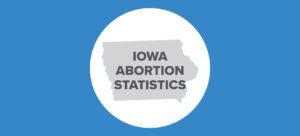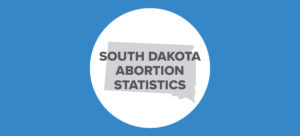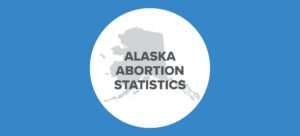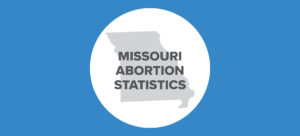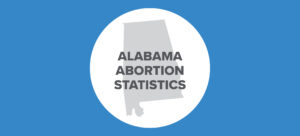
Tessa Cox
Senior Research AssociateTessa Cox is Senior Research Associate at Charlotte Lozier Institute, where her research focuses on abortion statistics at the state and national levels and the changing landscape of abortion policy, provision, and access in the United States.
Tessa has appeared on CBN News and EWTN News Nightly and has testified before Members of Congress on the Born-Alive Abortion Survivors Protection Act. Her work has been featured by National Review Online, Newsweek, The Gospel Coalition, The Daily Signal, RealClearHealth, and many other national media outlets. She has contributed to peer-reviewed research on women’s experiences with chemical abortion and the impact of abortion on women enrolled in Medicaid.
Originally from Illinois, Tessa earned a BA in Communications from Thomas Edison State University. Prior to joining CLI, she got her start in pro-life research with the Family Research Council.
Research Authored
Abortion Reporting: Utah (2016)
In a CLI study of state abortion reporting, Utah’s reports ranked in the top ten among the 50 states, the District of Columbia, and New York City. Still, the state has room for improvement. Utah could release its reports more quickly – 36 states published their 2016 reports before Utah did, and some have begun to release their 2017 reports. Utah could also collect and report information on its informed consent and parental consent processes. The state already reports comprehensive information on resident women who get abortions but could add information on all women undergoing abortion in the state, including the 97 women from Idaho.
Abortion Reporting: Florida (2017)
Florida’s annual abortion report for 2017 shows that the abortion count in the state has fallen from the year before. The Sunshine State is one of the first to make abortion statistics publicly available each year, demonstrating once again the ability of public officials to provide timelier data than is common among other states and the federal government.
Abortion Reporting: Iowa (2016)
Iowa’s 2016 vital statistics report, which includes seven pages of information on abortions performed in the state, was released on schedule this past December. Published by the Iowa Department of Public Health, the report reveals that total abortions in Iowa continue to go down, while chemical abortions are on the rise.
Abortion Reporting: Pennsylvania (2016)
Pennsylvania’s 2016 abortion report was published by the state Department of Health in December 2017. Additional abortion statistics for Pennsylvania residents are included in the state’s annual vital statistics report. Overall, total abortions in Pennsylvania continued to decline in 2016, while total chemical abortions increased.
Abortion Reporting: South Dakota (2016)
In 2016, there were 471 abortions performed in South Dakota. This was an increase of six percent from the previous year, when 444 abortions occurred, but a decline of 71 percent from 1974, South Dakota’s first full year of reporting after the Supreme Court legalized abortion across the United States. South Dakota’s abortion data from 1974 is available in an online database. Chemical abortions made up 40 percent of total abortions in 2016. Chemical abortions increased by six percent from 2015 but fell by 24 percent from 2008, the first year with chemical abortion data available online. South Dakota does not report the state abortion rate, although the Charlotte Lozier Institute estimates that the state rate (2.98 abortions for every 1,000 South Dakotan women of childbearing age) has increased slightly since 2015.
Abortion Reporting: South Carolina (2016)
In 2016, there were 10,716 abortions performed on South Carolina residents. South Carolina reports only resident abortions and does not include abortions performed on non-resident women. Abortion data reflect abortions performed on South Carolina residents in South Carolina, North Carolina, and Georgia. Abortions performed on South Carolina residents have fallen by eight percent since 2015 and by 29 percent since 1990, the first year with abortion data available. South Carolina does not report chemical abortion data. The state abortion rate in 2016 was 11.2 abortions per 1,000 women ages 15 to 44.
Abortion Reporting: Alaska (2017)
There were 1,255 abortions performed in Alaska in 2017, similar to the 1,260 performed in the state the year before. Since 2003, Alaska’s earliest abortion reporting year, abortion totals have declined by 31 percent. Twenty-four percent of the abortions performed in Alaska in 2017, that is, 305 abortions, were chemical. Chemical abortions fell by seven percent from the previous year and by nine percent from 2003. Alaska does not report the state abortion rate, but the Charlotte Lozier Institute (CLI) estimates that the state’s rate of 8.52 abortions per 1,000 women of childbearing age has declined slightly from 2016.
Abortion Reporting: Missouri (2016)
Missouri’s annual abortion report for 2016 shows that abortion is declining in the Show-Me State, while Missouri residents continue to get abortions in neighboring states. Published online in January by the Department of Health and Senior Services, the report comprises eight pages in the state’s vital statistics report.
Abortion Reporting: Alabama (2016)
In 2016, there were 6,642 abortions reported in Alabama, an increase of almost 13 percent from the year before, when 5,899 abortions were performed in the state . Abortions have fallen by almost 41 percent since 2005, the first year with information available


















